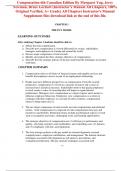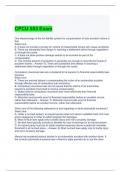Exam (elaborations)
Instructor Manual for Compensation 6th Canadian Edition By Margaret Yap, Jerry Newman, Bruce Gerhart (All Chapters, 100% Original Verified, A+ Grade)
- Course
- Institution
This Is Original 6th Edition of Instructor Manual From Original Author. All Other Files in the market are fake/old Edition. Other Sellers Have changed old Edition Number to new But Instructor Manual is old Edition. Instructor Manual for Compensation 6th Canadian Edition By Margaret Yap, Jerry ...
[Show more]




